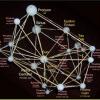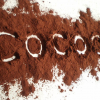Edited by mike250, 03 February 2010 - 11:50 AM.

GERD (Gastroesophageal reflux disease) Treatments
#31
Posted 03 February 2010 - 11:49 AM
#32
Posted 04 February 2010 - 05:01 AM
But I recently decided to pursue it in a different way though: I bought some betaine and pepin to increase my stomach acid, instead of using H2 blockers or proton pump inhibitors that made me develop tonnes of food allergies. It just came to my attention that LOW stomach acid can cause GERD just as too much stomach acid can (Link)
And on stand-by incase i need something more: I'm going to get some bethanechol and then pilocarpine.
I'm going to take pilocarpine to increase salivation. Rationale: I wake up with dry mouth every morning and I think not having saliva to keep the reflux down is an aggravating factor
And bethanechol to hopefully tighten the LES. I haven't read any bad things about it causing tardive dyskinesia, etc. so hopefully it's safe and effective.
I also just started taking ginger during meals after reading it in fuckodyssey's regimen, and i am going to continue using sucralfate at bedtime to coat my stomach and esophagus.
#33
Posted 27 October 2010 - 03:35 AM
I have had night time GERD for 4 months and have been on zantac for 1 month, prilosec for 1 month, then protonix for 1.5 months and it is still not going away. I have avoided all the main triggers: caffiene, alcohol, chocolate, tomato sauce etc. The main symptom has been a burning throat and the feeling of having something stuck in my throat. Helicobacter pylori test was negative and barium swallow did not find any abnormalities except reflux.
From the advice in the thread I just ordered: Canada Gaviscon, D-Limonene, Triphala, and l-glutamine.
#34
Posted 27 October 2010 - 08:11 AM
#35
Posted 06 November 2010 - 01:35 AM
#36
Posted 06 November 2010 - 02:39 AM
60 MG's of Baclofen before bed cured my unmanageable reflux after i retried it.
http://www.ncbi.nlm....pubmed/12197845
http://www.medscape....warticle/462386
Baclofen and a high dose of glutamine stopped my sphincter from relaxing and I cut out stomach acid suppressing drugs entirely. I guess I didn't take it long enough the first time (when i made this thread)
PPI's, H2 blockers, etc. never helped me.
That could be an adjunct to other treatment people are using that are having the same trouble I had.
Edited by k4t, 06 November 2010 - 02:42 AM.
#37
Posted 07 November 2010 - 07:09 AM
#38
Posted 08 November 2010 - 05:32 AM
For an update in case it will help other people:
60 MG's of Baclofen before bed cured my unmanageable reflux after i retried it.
http://www.ncbi.nlm....pubmed/12197845
http://www.medscape....warticle/462386
Baclofen and a high dose of glutamine stopped my sphincter from relaxing and I cut out stomach acid suppressing drugs entirely. I guess I didn't take it long enough the first time (when i made this thread)
PPI's, H2 blockers, etc. never helped me.
That could be an adjunct to other treatment people are using that are having the same trouble I had.
Hi k4t,
I wish to try exactly what you did with Baclofen and glutamine, can you give me more details so I can replicate it?
what doses?
what times?
before or after eating?
pills or powder?
how long were you on the regimen?
when did you first notice a difference?
are you still taking anything?
Thanks
#39
Posted 08 November 2010 - 06:15 AM
For an update in case it will help other people:
60 MG's of Baclofen before bed cured my unmanageable reflux after i retried it.
http://www.ncbi.nlm....pubmed/12197845
http://www.medscape....warticle/462386
Baclofen and a high dose of glutamine stopped my sphincter from relaxing and I cut out stomach acid suppressing drugs entirely. I guess I didn't take it long enough the first time (when i made this thread)
PPI's, H2 blockers, etc. never helped me.
That could be an adjunct to other treatment people are using that are having the same trouble I had.
Hi k4t,
I wish to try exactly what you did with Baclofen and glutamine, can you give me more details so I can replicate it?
what doses?
what times?
before or after eating?
pills or powder?
how long were you on the regimen?
when did you first notice a difference?
are you still taking anything?
Thanks
Have you tried Japanese natto? Fermented drinks may work well also. The angle here is to increase stomach acid.
#40
Posted 08 November 2010 - 06:23 AM
For an update in case it will help other people:
60 MG's of Baclofen before bed cured my unmanageable reflux after i retried it.
http://www.ncbi.nlm....pubmed/12197845
http://www.medscape....warticle/462386
Baclofen and a high dose of glutamine stopped my sphincter from relaxing and I cut out stomach acid suppressing drugs entirely. I guess I didn't take it long enough the first time (when i made this thread)
PPI's, H2 blockers, etc. never helped me.
That could be an adjunct to other treatment people are using that are having the same trouble I had.
Hi k4t,
I wish to try exactly what you did with Baclofen and glutamine, can you give me more details so I can replicate it?
what doses?
what times?
before or after eating?
pills or powder?
how long were you on the regimen?
when did you first notice a difference?
are you still taking anything?
Thanks
I was taking 40-60 MG / night of the Baclofen.
The first few times I took Baclofen @ 10 MG it felt like I was on low grade ecstasy. So, if you're going to try that route slowly build up tolerance, or it might be overwhelming. My issue was nocturnal GERD, so I mostly only took it at night (although i did take it a few times in the day for recreational purposes :P). it had a mild antidepressant effect on me, and I felt slightly drunk in the mornings, but i got used to it.
I was taking several grams of glutamine with it at the start, but scaled back. I was also able to scale back the Baclofen as the GERD reduced and my sphincter healed. You can pick up high quality pharmaceutical grade glutamine in bulk relatively cheep here: http://www.iherb.com...Powder/183?at=0
I also took a proton pump inhibitor with it for awhile at the start.
I don't remember how long until it worked. I posted this thread and said it didn't work, but a year later said I'm cured from it. So, sometime in a few month period after stopping and restarting it.
I'm only taking a h2 blocker and glutamine now if i feel chocked up, or if i had consumed my trigger foods (tomatoes, pop, chocolate, etc) that day and know I'm going to be refluxed. i also raise my bed then.
Other things to try: Funkodyssey recommended ginger and ashwaganda a couple years ago and i remember those helping as well, although not as potently as the above regimen.
Edited by k4t, 08 November 2010 - 06:28 AM.
#41
Posted 12 November 2010 - 12:12 AM
I'm sure everyone is aware of three pronged approach, an antibiotic, a proton pump inhibitor, and an antacid. But in terms of the alternative route, I've heard some good things about Mastic Gum, and AOR's product in particular. As a last resort, you could always try surgery if your insurance plan and financial situation permits this step.
I'm also going to go with mastic gum extract. If it's bacteria that's causing the upsets than MGE might help in the stomach and esophagus. Don't know if you had breath tests or an antibody test to check for any h. pylori infection. If not you can request they be done.
Alec
#42
Posted 31 March 2012 - 08:12 AM
Anything that effects neurotransmitters in the Vagus nerve has the potential to help, or hurt
Many studies have demonstrated that histamine 2 receptor antagonists (H2RA) have in vitro anticholinesterase effects, but discrepancies about type and potency of this inhibitory effect exist among published results. Moreover, cholinesterase inhibition has not been shown in patients receiving H2RA. These discrepancies led us to study the in vitro antibutyryl- and in vitro antiacetylcholinesterase activities of ranitidine, cimetidine, nizatidine comparatively to pyridostigmines. Plasma cholinesterase activity (PCEA), erythrocyte cholinesterase activity (ECEA) and plasma ranitidine levels were measured in six patients before and during continuous IV infusion (150 or 200 mg/d) of ranitidine. Our in vitro results confirm the weak anticholinesterase activity of H2RA. Ranitidine is the most potent inhibitor of butyrylcholinesterase (Ki = 61 microM). Ranitidine and nizatidine are the most potent inhibitors of acetylcholinesterase (Ki' = 2.1 microM, Ki' = 5.1 microM, respectively) but one thousand times less effective than pyridostigmine (Ki = 0.003 microM). The results in patients show no statistically significant difference between PCEA and ECEA measured before and during ranitidine infusion (plasma ranitidine levels between 0.31 and 1.25 microM).
http://www.longecity...tagonist-drugs/
So Ranitidine is a parasimaptetic drug and a parasimaptetic stimulation decrase LES tone (I've understud well ? I've found in the net someone saying the opposite)...
Famotidine has not this effect of inhibiton of acetylcholinesterase and should not so decrase LES tone.
http://www.hindawi.c...011/218342/cta/
So it seems Ranitidine decrase LES tone, but also stimulates mucus production (helping to heal the stomach), empties the stomach (beeing prokinetik)... reduced acetylcholine receptors (negative regulation due to previous upregulating of acetylcholine)... so it seems to me it keeps LES open while acidity is low (H2 inhibition) and mavbe helps to keep it close when its effect is over (reduced acetylcholine receptors).
Also half life and effect span of Ranitidine (Famotidine bit longer) makes its effects to totally wanish for lunh (if taken at 9.00/10.00 pm)... so reducing or eleminating the malabsorbtion due to low stomach acid secretion.
So what is better... Ranitidine or Famotidine ?
Edited by brunotto, 31 March 2012 - 09:07 AM.
#43
Posted 31 March 2012 - 09:24 AM
The anticholinergic agent atropine appears to cause a significant decrease in basal LES pressure in the cat, dog and human, suggesting that tonic intrinsic and/or extrinsic cholinergic fiber activity may play some role in basal LES tone in these species. Stimulation of sympathetic nerves innervating the LES causes LES contraction. However, transection of these nerves or administration of adrenergic antagonists have no effect on basal LES tone. Therefore, it appears that sympathetic nerves have some role in modulating LES tone, but may have little, if any, role in the genesis of basal LES tone.
http://www.hon.ch/OE...les/ART066.HTML
Ranitidine and nizatidine are 2 histamine H2-receptor antagonists that are prokinetics in addition to inhibiting gastric acid secretion in dogs and rats. Their prokinetic activity is due to acetylcholinesterase inhibition, with the greatest activity in the proximal GI tract. Cimetidine and famotidine are not acetylcholinesterase inhibitors and do not have prokinetic effects. Ranitidine and nizatidine stimulate GI motility by increasing the amount of acetylcholinesterase available to bind smooth muscle muscarinic cholinergic receptors. They also stimulate colonic smooth muscle contraction in cats through a cholinergic mechanism.
http://www.merckvetm...m/bc/190307.htm
Edited by brunotto, 31 March 2012 - 09:49 AM.
#44
Posted 01 April 2012 - 05:58 PM
An good adjunct to this can be Orka-Pepsin depending on the causal factors.
#45
Posted 01 April 2012 - 06:40 PM
Edit: If I don't keep using live probiotics, my symptoms return though.
Edited by kevinseven11, 01 April 2012 - 06:41 PM.
#46
Posted 03 April 2012 - 08:05 AM
M. Mignon, G. Cadiot (Paris)
In contrast to the esophageal body which is flaccid at rest and not exhibiting any spontaneous activity, the distal end of the esophagus is a 3 to 4 cm long segment of tonically contracted smooth muscle aiming at producing the occlusion of the lumen to prevent gastroesophageal reflux (GER).
Irrespectively of the existence or not of a true anatomically defined sphincter, the distal part of the esophagus represents a high pressure zone functionning as a physiological anti-GER barrier and has accordingly been denominated lower esophageal sphincter (LES).
Although much knowledge has been accumulated about LES entity in the last decades, there remain still some uncertainties and controversies as to the genesis and control of this high pressure zone. These gaps in our knowledge relate probably to several factors:
- Inappropriateness of the term "at rest": is actually LES "at rest" in the interval of swallowing food?
- Species differences which make perhaps hazardeous extrapolating findings from animals to human beings!
- Plurality of structures involved in the genesis of the high pressure zone: distal esophageal smooth musculature, diaphragmatic crus and peri-esophageal adjacent structures.
- Complexity of neurohormonal regulation suggesting that could be surimposed upon the myogenic component of the LES high pressure zone, a balance between exogenous excitatory and relaxing influences under neural control?
Anatomical components of the distal esophageal high pressure zone
Usually in man the LES is a 2 to 4 cm in length segment of the esophagus located at the gastroesophageal junction, lying predominantly within the abdominal cavity.
The muscular thickening that was described as a ring at this level (gastroesophageal ring) by Liebermann-Meffert et al. [1] is entirely from the circular (inner) muscle coat.
Ultrastructural differences with the circular muscle of the esophageal body may reflect the tonically contracted state of this sphincteric zone [2]. Compared to esophageal body, the differences are within the muscular cells: more central position and larger size of mitochondria reflecting probably the large importance of the aerobic processes underlying the maintenance of the steady tonic contraction of the LES, and greater abundance of endoplasmic reticulum, presumed site of calcium storage, and larger concentration and turnover of 1,4,5-IP3 which mediates calcium release from its intracellular stores.
The crural diaphram exerts an extrinsic compression on the LES, contributing thus to the high pressure recorded within the LES [3, 4]. It is probably responsible for the inspiratory augmentation of the LES pressure and it may be of cardinal importance to prevent GER during abdominal straining [4].
The muscular component of the distal esophageal high pressure zone at rest is probably essential in preventing gastroesophageal reflux during restful recumbency [3].
The contribution of Laimer membrane and of adjacent periesophageal structures has not yet been precisely evaluated. These structures might intervene in the interval of digestive period during abdominal straining in relation to increased intra-abdominal pressure.
Physiological limits and relative stability of intra-LES pressure at rest
The normal intraluminal pressure generated at the gastroesophageal junction at rest (defined as fasting and restful supine position) averages 25 mmHg above the atmospheric pressure ranging from 15 to 40 mmHg. Technical modalities for LES resting tone measurements may provide variable limits of normality: for instance the average value is 29 ± 12 mmHg if the measurement is made by rapid pull-through and 24 ± 10 mmHg in the case of intermittent pull-through.
It constitutes an efficacious barrier between intra-abdominal pressure increases and the slightly positive or negative pressures (according to respiratory cycle) recorded in the esophageal body. It is susceptible to reflexively adapt to every increase in abdominal pressure. The absolute spincter gradient remaining between intragastric pressure and intra-LES pressure is estimated to be around 18 mmHg [5].
Outside the resting conditions observed for basal LES tone measurement and in the interval of swallowing food (i.e. for a large portion of the nycthemeral period) physiological variations in the basal LES tone can occur: besides from the modest variations related to the respiratory cycle, an increase in LES pressure may be induced for instance by increased intra-abdominal pressure or acidic gastroesophageal reflux [6]. LES tone increases at night and is positively influenced by phase II and III of the migrating motor complex phenomenon. In contrast, LES tone decreases in the late hours of the post-prandial period in relation perhaps to circulating peptides. Transitory spontaneous LES relaxation may also occur in normal individuals during the whole nycthemeral period associated or not to acidic reflux or belching [7].
Factors responsible for LES high pressure at rest
Schematically two varieties of components are involved: myogenic and neurogenic. Many experimental data were obtained from in vitro studies using a LES strip from oppossum and subhuman primates (each of whose esophageal anatomy closely resembles that of humans). Because of this similarity with human beings and because tetrodotoxin, an agent that abolishes all nerve activity, did not alter the level of tonic contraction of the oppossum strip, it was felt that most of the LES high pressure zone was myogenic in relation to specific intrinsic smooth muscle activity [2]. These particularities, as already alluded to above, might pertain to:
- mitochondria disposition within the smooth muscle cell, more centrally distributed,
- the handling of calcium movements by the muscular cell resulting in increased calcium conductance and a stable concentration of calcium within the cytoplasm of the muscle cell that the cell could utilize, independently of extra-cellular calcium.
These particularities of the LES smooth musculature are identical to those of other tonic muscles such as pyloric sphincter muscles and have been developed extensively elsewhere [2].
Species differences, however, do exist reducing in cats, dogs and humans the preponderance of the myogenic component of the basal LES high pressure [2, 8].
Other factors are nerve activity and perhaps circulating hormones, opioids and sympathetic agonists which can surimpose their influence on the basic myogenic tone. As well established, the LES is directly innervated by two opposing neuronal systems: cholinergic and non-adrenergic non-cholinergic neurons (now probably better called nitrinergic) that originate within the myenteric plexuses and modulate the LES tone exerting either stimulatory or inhibiting influences on the smooth muscle activity.
Both types of neurons, however, are in turn activated by cholinergic excitation at the level of the myenteric plexuses, albeit via different receptors.
In animals, indeed, studies employing vagotomy and vagal stimulation suggest that the sphincter tone is probably in part modulated by vagal activity and that this vagal influence is somewhat greater in the dog and in the cat than in the oppossum [2].
The excitatory fibers enter the esophagus fairly high because high abdominal truncal vagotomy does not affect sphincteric closure force.
In oppossums and monkeys, the usual concentrations of atropine, a muscarinic cholinergic antagonist, do not significantly reduce the force of the sphincter closure, but they do in cats and even more markedly in dogs.
In humans, the majority of sphincter tone is susceptible to muscarinic blockade with atropine.
Studies in humans with the relatively selective muscarinic blocker pirenzepine indicate that LES tone is mediated via M2 receptors situated on the LES smooth muscle [8].
Although, the sympathetic nerves supplying the LES are excitatory, sympathetic innervation seems to have little influence on the basal LES tone, but it may participate in reflexively induced effects [2]. Influences of various peptides and neuro-transmitters on LES function are summarized in Table I [9] and critically discussed in a previous meeting of OESO (OESO III) [10]. To summarize the discussion, it could be said, at present, that no one hormone can be considered as the only or even the major determinant of tone in the LES in physiological conditions [10].
Role of nitrinergic neurons and Cajal interstitial cells in the regulation of the LES tone
The recent emphasis put on both nitric oxyde as the neurotransmitter of non adrenergic-non cholinergic neurons involved in LES swallowing-induced relaxation [11-13] and Cajal interstitial cells (CIC) as intermediate structures between smooth muscular cells and myenteric neurons, raises the possibility of the implication of these two elements in the subtile regulation of LES maintained tone.
The first one has in the last few years, indeed, convincingly been shown to be the most likely candidate for smooth muscle relaxation induced by esophageal peristalsis in physiological conditions. Could it be involved in the fine balance between excitatory and relaxing events that might exist within the LES musculature to maintain tone?
The almost exclusive location of CIC at proximity of the circular muscular layer is also noteworthy. These cells establish close contact between themselves, smooth muscular cells and the axonal varicosities of the myenteric neurons [12-14]. Should this anatomical disposition mean that, as in the gut muscles, CIC play an intermediate role (modulation, pace-setting) between smooth muscle cells and myenteric neuronal plexuses? This is an exciting area for future research.
Table I. Effects of various endogenous peptides and neurotransmitters on the lower esophageal sphincter. (From [9].)

http://www.hon.ch/OE...les/art009.html
So Arginine (producing more NO) is bad for GERD... Lysine (reducing Arginine absorption) should be good.
It looks like a local acting M2 agonist should be good and H2 antagonist too... Ranitidine looks quite the best drug here IMHO.
Edited by brunotto, 03 April 2012 - 08:14 AM.
#47
Posted 03 April 2012 - 09:21 AM
Surprisingly, so did Nortryptaline for some reason, and that's all I'm using now and it keeps my reflux at bay.
#48
Posted 03 April 2012 - 09:32 AM
http://www.ncbi.nlm..../pubmed/9045450
http://www.ncbi.nlm....pubmed/10772385
http://www.ncbi.nlm....pubmed/12023551
Glutamine is quite immunostimulating (TH1)...
May the anti-H2 agents used in the treatment of esophagitis modify esophageal motility by increasing the tonus of the LES ?
K. Nygaard (Oslo)
Inhibition of gastric acid secretion has been considered the main reason for the beneficial effect of the anti H2 agents on reflux esophagitis. Whether these drugs also affect reflux by changing the LES tonus has been the subject of several studies since the introduction of the H2 antagonists.
Kravitz et al. [1] in normal humans, found that histamine infusion increased the tonus of LES, and this effect was blocked by cimetidine but not by an H1 antagonist, diphen-hydramine. Oral administration of cimetidine alone at different dose levels did, however, not alter basal LES pressure. Cimetidine did not affect the LES pressure increase induced by pentagastrin or by oral ingestion of a protein hydrolysate. These results indicated that in humans, the LES response to histamine is mainly excitatory and mediated through H2 receptors, but H2 antagonist with cimetidine had no effect on the basal LES pressure.
One other study with cimetidine was done by Bailey et al. [2], who found no sustained effect, but a transient LES pressure increase during cimetidine infusion.
Ranitidine was found, on a molar basis, to be more effective than cimetidine in inhibition of gastric acid secretion, and its possible action on LES attracted interest.
Bertaccini et al. [3] by in vitro experiments, concluded that ranitidine, but not cimetidine, had a stimulatory effect on LES muscle tissue in different species, including humans. The effect was blocked by atropin, and was therefore considered to be mediated by cholinergic stimulation. They also found a significant increase in human LES pressure after an oral dose of 0.5 or 1.0 mg/kg of ranitidine, the increment above basal values being 44 p. cent and 72 p. cent, respectively.
Since then, there have been several studies on the effect of ranitidine on LES and esophageal peristalsis, with conflicting results. Gemini et al. [4], in healthy subjects and reflux patients, found increased secondary esophageal peristalsis after a single i.v. dose of ranitidine (1 mg/ml), but no significant increase of basal LES pressure. On the other hand, Brock Utne et al. [5] found that the LES pressure was significantly increased over control values five minutes after an i.v. dose of 150 mg ranitidine.
A number of other studies have not been able to confirm any effect of ranitidine on LES tonus after oral [6-8] or i.v. administration [6, 9]
We carried out a study on 21 healthy students 18-29 years of age [10]. The study was performed in a double blind fashion. The persons were given 3 oral doses of 150 mg ranitidine or placebo with 12 hours interval, the last dose 2-3 hours before the manometric examination. Each person was studied 3 times, once after ranitidine and twice after placebo. Manometry was performed using a three lumen open tip water perfused (0.5 ml/min) catheter with openings at 5 cm interval, connected to external transducers. LES length, pressure and relaxation were studied, as well as velocity, duration and amplitude of the peristaltic waves.
There was a moderate, but significant increase of LES pressure after ranitidine compared to placebo (table 1). LES length, and the parameters on peristaltic waves showed no differences.
The studies on effects of H2 antagonists on the LES pressure have thus given conflicting results. In our study, we used a greater number of subjects than in most other investigations, and furthermore carried out two placebo studies in each subject. The question is, however, yet not fully answered, and further studies with varying doses and duration of treatment may be of interest.
It should also be pointed out that most of the studies have been performed on healthy subjects and not on patients suffering from gastroesophageal reflux disease. At the present time, there seems good reasons to conclude that a possible increase in LES pressure caused by H2 antagonists probably is moderate. There are few data on patients with pathologic reflux, and we cannot draw direct conclusions from observations on normal subjects. It seems unlikely that the doses of H2 antagonists used in these investigations give a tonus rise of the LES which is of any significance in the anti-reflux barrier.
Ranitidine have been given in doses commonly used for treatment of peptic ulcer (150-300 mg). The optimum dose level used in reflux esophagitis is probably higher, up to 450 or 600 mg [11]. Whether these higher doses cause a more pronounced increase of LES pressure may be at least of theoretical interest.
http://www.hon.ch/OE...les/ART389.HTML
Edited by brunotto, 03 April 2012 - 09:55 AM.
#49
Posted 03 April 2012 - 09:46 AM
http://jpet.aspetjou...4.full.pdf+html
Edited by brunotto, 03 April 2012 - 09:56 AM.
#50
Posted 13 April 2012 - 07:20 AM
Ranitidine may damage kidney !!!
In conclusion, similar histological changes observed in kidney cortex in both experimental groups indicate that these drugs should be used more carefully.
http://journals.tubi...-2-9-0103-2.pdf
Edited by brunotto, 13 April 2012 - 07:23 AM.
#51
Posted 28 June 2012 - 08:41 PM
4 user(s) are reading this topic
0 members, 4 guests, 0 anonymous users















































